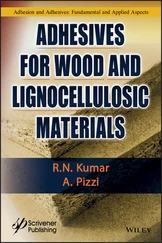1 Cover
2 List of Figures
3 List of Tables
4 About the Author About the Author Dipak Sarker is a principal lecturer, a qualification related to expert teaching skills. He has a long history of academic instruction and scholarly activity – through teaching, study coordination, and peer‐reviewed publication – that extends over the last 25 years. He gained a PhD in physics in 1995 from the University of East Anglia (UK), having worked at the Max‐Planck Institute in Berlin, Germany; the Biophysics Group at the Institute of Food Research in Norwich, UK; the University of East Anglia in Norwich, UK; the Institut National de la Recherche Agronomique, Nantes, France; and the École Normale Supérieure, Paris, France. He has also taught and managed staff during his employment in industry and during his current industrial collaborative research. His areas of expertise traverse process engineering and analytical chemistry to materials sciences and the physics of simple and complex materials and industrial dispersions. He also has a wealth of experience based around pharmaceutical technology, medical devices, and the processing of foods. He has worked as a process and development scientist for some of the most significant global manufacturers of foods, medicines, and medical devices (Unilever, Hoffmann‐La Roche, and GSK). He has supervised approximately 17 doctoral students and postdoctoral researchers and more than 40 masters students over the period of 25 years, with countless numbers of undergraduate research projects. He has collaborated with researchers, and supervised, taught, and trained postgraduates across Europe and Asia. He has also presented his works at a large number of international conferences (from Vietnam to the USA). He is the editor of two advanced drug delivery and nanotechnology journals and is on the editorial board of more than other 10 journals covering food science, materials, engineering, physics, nanotechnology, and drug delivery science and device technology. He has authored two complete books and three book chapters. He has always worked across disciplines and, despite working in the School of Pharmacy and Biomolecular Sciences, has research students and postdoctoral researchers traversing, for example, physics, chemistry, and engineering, including computational modelling of impacting droplets, process optimisation for commercial medicines, soft matter, complex fluid physics, delivery of drugs and anti‐cancer nanoparticles, plasma physics, recycling of cotton and plastic waste materials, and cleaning technology for automobiles. He currently collaborates with academics and industrialists in the UK, India, China, France, the USA, Bulgaria, Kazakhstan, Turkey, and Italy.
5 Preface
6 Section I Scientific and Technological Background to Materials 1 Historical Perspective and Evolution 1.1 Introduction 1.2 Survey of Packaging Use References 2 Chemical Engineering of Packaging Materials 2.1 Introduction 2.2 Building Blocks, Extraction, and Raw Materials 2.3 Industrial Processes, Wood‐Pulping, Processing, and Smelting 2.4 Making Glass References 3 Material Science and Chemistry 3.1 Introduction 3.2 Glasses 3.3 Metallic Materials 3.4 Polymeric Materials 3.5 Colorants, Opacifiers, and Colouring 3.6 Plasticisers and Other Additives 3.7 Barriers, Barrier Properties, and Product Modification 3.8 Estimating the Shelf Life of Packaging 3.9 Chemical Testing 3.10 Contemporary Issues and Controversies with Modern Packaging Materials References 4 The Physics of Packaging Materials 4.1 Introduction 4.2 Characterisation of Packaging Substrates 4.3 Test Methods References 5 Engineering of the Product: Design, Formation, and Machining 5.1 Introduction 5.2 Fourdrinier Processing and Paper‐Making 5.3 Sheeting, Injection Moulding, Thermoforming, Welding, Extrusion, Plasma Treatment, Annealing, and Curing 5.4 Classification of Moulded Packaging Forms References
7 Section II Application and Processing 6 Packaging for Various Applications 6.1 Introduction 6.2 Hermetically Sealed Containers and Developments 6.3 Modern Sterilisation and Pasteurisation Procedures and the Effects of Chemistry, Temperature, Pressure, and Irradiation on the Product and Pack 6.4 Metered Therapeutic Dose Devices 6.5 Heat‐Sealed Goods and Modified Atmosphere 6.6 Childproof and Easy‐Open Packaging 6.7 Multi‐Dose Pharmaceutical Bottles References 7 Food, Pharmaceutical, and Medical Packaging 7.1 Introduction 7.2 Food Packaging 7.3 Pharmaceutical Packaging 7.4 Medical Device Packaging References
8 Section III Quality, Integrity, and Traceability 8 Suppliers and Manufacturers of Packaging 8.1 Introduction 8.2 Environmental Concerns and Sustainability 8.3 Recycling and After‐Use 8.4 Tracing, Anti‐Counterfeiting Technology, and Anti‐Fraud Devices 8.5 Accelerated Testing 8.6 The Distribution Chain and Transport Logistics 8.7 Packaging Regulations and Guidelines 8.8 Safety, Health, and Practicality References
9 Section IV Revision and Information Problems: Questions, Calculations, Estimates, and Dilemmas References Appendices, Glossary of Terms, and AbbreviationsGlossary of Terms and Acronyms Periodic Table of Chemical Elements and Fundamental Chemistry Chemical Symbols and Abbreviations Scientific and Engineering Symbols
10 Index
11 End User License Agreement
1 Chapter 1 Table 1.1 Packaging: contains, protects, preserves, transports, ‘informs’, and ‘... Table 1.2 Accepted international identity and recycling codes from the American ...
2 Chapter 3 Table 3.1 Metals and their use in packaging. Table 3.2 The elemental composition (by percentage) of common metals used in pac... Table 3.3 Types of polymer packaging: polyolefins, cellulosics, and polyisoprene... Table 3.4 Polyethylene types and properties. Table 3.5 Laminates for use in packaging for gas and water barrier properties, m... Table 3.6 Coal tar dyes, lakes, and pigments.Table 3.7 Resistant coatings to protect packaging and product.Table 3.8 Packaging permeability for gases and water vapour recalculated and bas...Table 3.9 Physicochemical testing of packaging.
3 Chapter 4Table 4.1 Surface energy and wetting of packaging materials.Table 4.2 Brittleness, hardness, and Mohs scale.Table 4.3 Puncture and slip test methods.
4 Chapter 6Table 6.1 Fundamental requirements of packaging.Table 6.2 Napoleon's influence and the history time line from the early years of...Table 6.3 Thermal conductivity and heat transfer data for a range of packaging m...Table 6.4 Cartons, sterilised pouches, and the aseptic Tetra Brik® from Tetra Pa...Table 6.5 Heat‐sealed goods and modified atmosphere (MA) systems.
5 Chapter 7Table 7.1 Food packaging restrictions and key criteria.Table 7.2 Common packaging starting materials.Table 7.3 Webbing materials.Table 7.4 Pharmaceutical packaging restrictions and key criteria.Table 7.5 Medical device packaging restrictions and key criteria.
6 Chapter 8Table 8.1 Suppliers and manufacturers of packaging.Table 8.2 Recycling and after‐use.Table 8.3 Chemical watermarks and event markers.Table 8.4 Accelerated testing and shelf life prediction.Table 8.5 Packaging regulations and guidelines, examples of guidelines, and aspe...
1 Chapter 1 Figure 1.1 Packaging of the past. Figure 1.2 Survey of packaging use: the needs fulfilled by packaging.
2 Chapter 2 Figure 2.1 Packaging materials chemical engineering unit operations. (a) Org... Figure 2.2 Commodities and principal types of raw materials used for packagi... Figure 2.3 Making metal, glass, and paper packaging raw materials, where all... Figure 2.4 Types of glasses used in packaging applications.
3 Chapter 3 Figure 3.1 Types of common glass bottles: clear or ‘flint’ (a, d, f), amber .
Читать дальше











